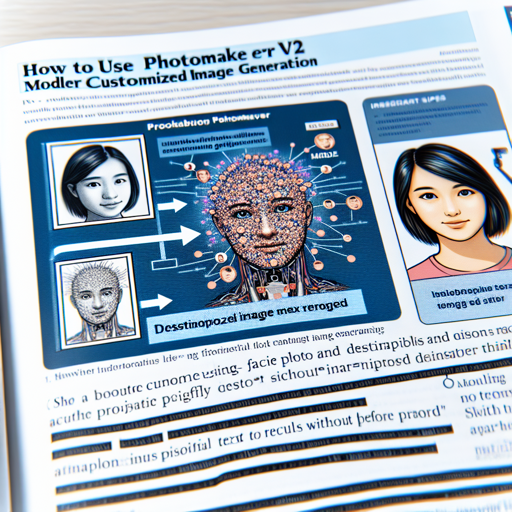The PhotoMaker V2 model represents a significant advancement in the realm of artificial intelligence and image generation. It allows users to create customized photos or paintings by simply inputting face photos along with descriptive text prompts. This incredible technology can deliver stunning results within seconds, without the need for any training. In this guide, we’ll walk you through how to use the PhotoMaker V2 model effectively.
Getting Started with PhotoMaker V2
Before you start creating, ensure you have access to a few face photos and a text prompt that describes the image you wish to generate. Below are the essential steps to begin using this model:
Loading and Using the Model
The PhotoMaker V2 model can be easily accessed and employed directly from your local machine. Here’s how:
- First, clone the repository or download it from the GitHub page.
- Use the following Python code snippet to download the model:
python
from huggingface_hub import hf_hub_download
photomaker_ckpt = hf_hub_download(repo_id="TencentARC/PhotoMaker-V2", filename="photomaker-v2.bin", repo_type="model")
Understanding the Technology Behind It
Imagine the PhotoMaker V2 model as a highly skilled artist. Just as an artist uses their brush to create lifelike portraits, this model uses two fundamental parts to produce stunning images:
- id_encoder: Think of it as the artist’s knowledge of the human face, built with finetuned OpenCLIP-ViT-H-14 and several layers that contribute to capturing details.
- lora_weights: This is akin to the artist’s technique for blending colors in each brushstroke across attention layers. In our case, the rank is set to 64, ensuring a high quality in the generated images.
Limitations of the PhotoMaker V2 Model
While the technology is impressive, it is not without its challenges:
- The model’s customization performance tends to degrade when rendering Asian male faces.
- It may struggle with accurately rendering human hands—much like how an artist might find drawing hands challenging.
Tackling Bias in Image Generation
With great power comes great responsibility. The capabilities of image generation models like PhotoMaker can inadvertently reinforce or exacerbate social biases, necessitating a thoughtful approach to their application.
Troubleshooting Common Issues
Many users may encounter some hiccups along the way. Here are a few troubleshooting steps to keep in mind:
- If the images are not rendering correctly, double-check the prompt and ensure that the input photos are clear and well-lit.
- Make sure you have sufficient computational resources available. The model may require considerable processing power depending on the complexity of the requests.
For more insights, updates, or to collaborate on AI development projects, stay connected with fxis.ai.
Conclusion
The PhotoMaker V2 is a powerful tool that can transform simple inputs into incredible visuals. By understanding its functionalities and limitations, you can harness its capabilities for artistic creation and innovation in this digital age.
At fxis.ai, we believe that such advancements are crucial for the future of AI, as they enable more comprehensive and effective solutions. Our team is continually exploring new methodologies to push the envelope in artificial intelligence, ensuring that our clients benefit from the latest technological innovations.

